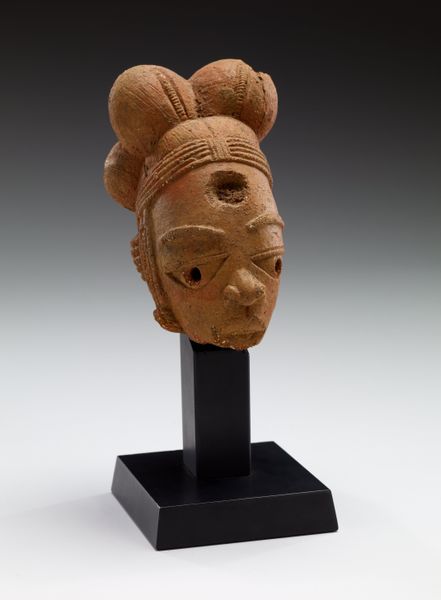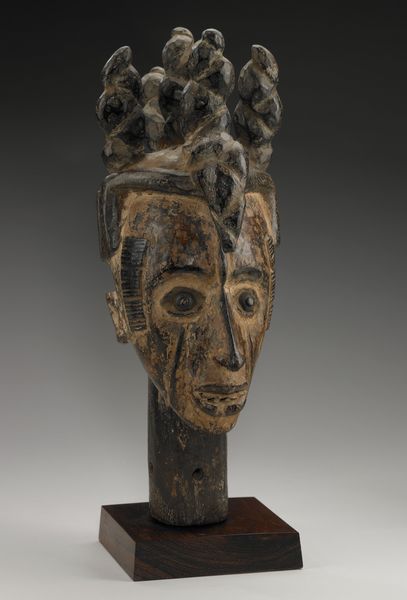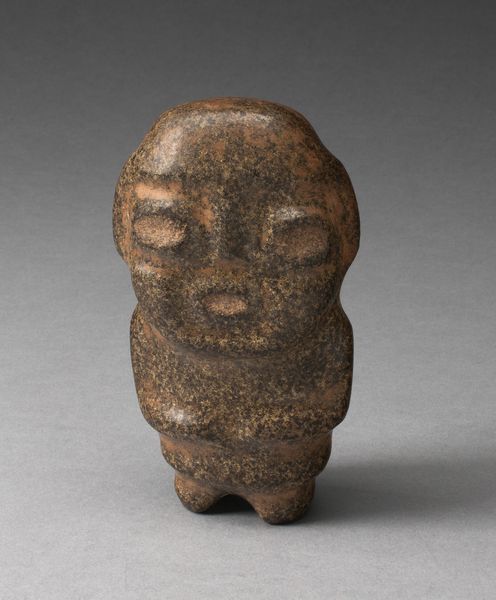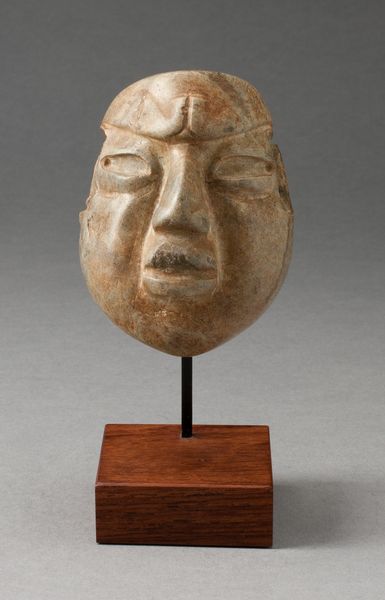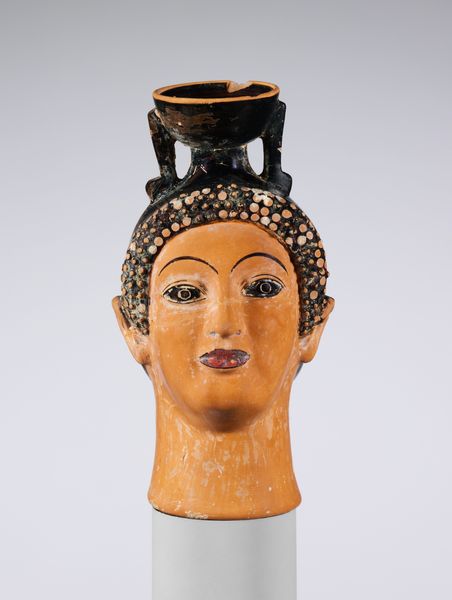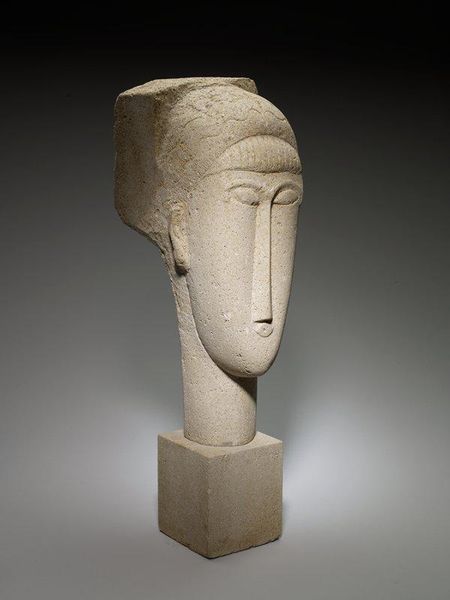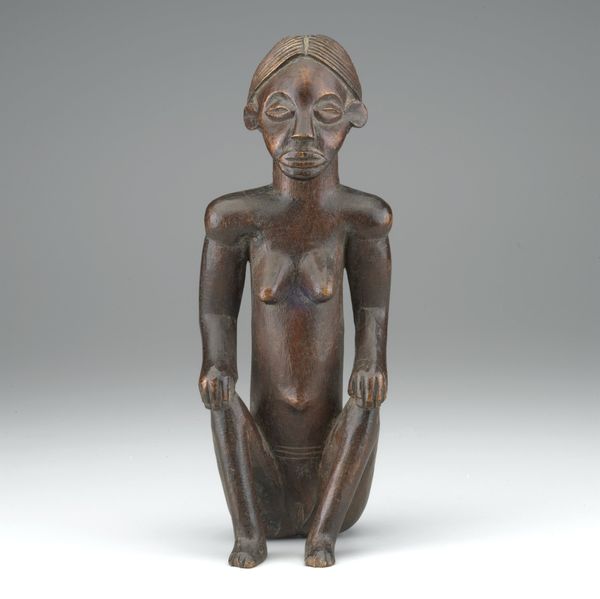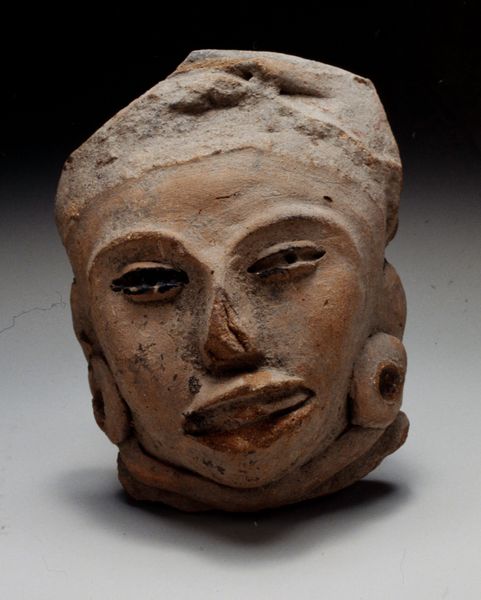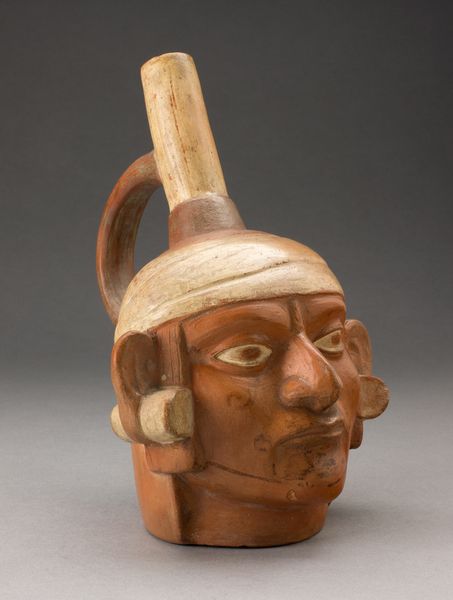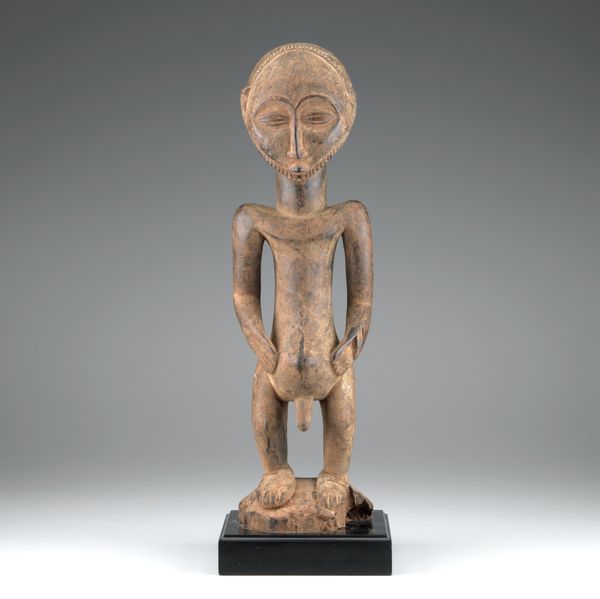
sculpture, wood
#
portrait
#
sculpture
#
figuration
#
sculpture
#
expressionism
#
wood
Dimensions: overall with base: 50.8 x 32.7 x 31.27 cm (20 x 12 7/8 x 12 5/16 in.) overall without base: 35.56 x 14.92 x 16.03 cm (14 x 5 7/8 x 6 5/16 in.) base: 15.2 x 17.8 x 15.2 cm (6 x 7 x 6 in.)
Copyright: National Gallery of Art: CC0 1.0
Curator: Ernst Ludwig Kirchner’s ‘Head of a Woman’ from 1913 is striking. The artist fashioned the sculpture from wood, which gives the piece a certain earthiness. What’s your initial impression? Editor: It has a rough, almost unfinished quality that I find compelling. The visible tool marks on the wood show the process of creation, but it also raises questions. I wonder, how did the means of production shape the final piece and how it was received? Curator: Excellent question! We must examine the properties of wood itself. As a material, wood demands particular tools and techniques, and the availability and quality of these would have directly impacted Kirchner's process. Do you think Kirchner intentionally left these marks visible? Editor: It feels deliberate, pushing against the tradition of highly polished, idealized sculptures. It seems he valued revealing the labor involved. How would this raw materiality have been viewed in relation to established art world practices at the time? Curator: This rawness challenged the accepted norms. During the early 20th century, the rise of industrial production influenced artistic practice and appreciation. This sculpture directly contrasts with the slickness of machine-made objects, celebrating individual labor and the artist's hand. Furthermore, the expressionistic style allowed for emotional honesty. Editor: So it becomes a social statement as well as a personal expression? Curator: Exactly! Kirchner's engagement with materiality serves as a commentary on both the act of artistic creation and broader cultural shifts towards industrialization and consumerism. Its roughness makes the viewer confront the means of production of a "fine art" object, encouraging thought about who makes art, what labor goes into its making, and even the function and place of the handmade in an increasingly mechanized world. Editor: Thinking about the context, I understand how the rough carving becomes so important. It transforms a portrait into a critique of society and celebrates the artistic process. Curator: Precisely. Paying attention to such a detail allows for so much appreciation. I wonder what the artist was intending when thinking about this... Editor: Yes, materials and artistic processes offer rich insights!
Comments
No comments
Be the first to comment and join the conversation on the ultimate creative platform.
